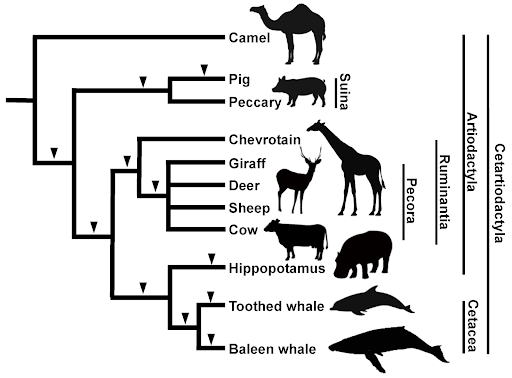Darwin and Evolution
Summary:
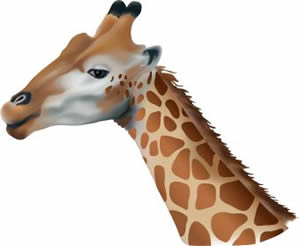
Evolutionary theory originated from the work of Charles Darwin in the 19th century. Darwin's groundbreaking book, "On the Origin of Species," published in 1859, introduced the concept of natural selection as the mechanism behind evolution.
Darwin observed variation in species and proposed that individuals with advantageous traits for their environment were more likely to survive and reproduce, passing on these beneficial traits to their offspring. This process, known as natural selection, gradually leads to the adaptation of species to their environments over successive generations.
Guiding Question: How did the giraffe get its long neck?
History of Evolutionary Thought
- Darwin made observations on his voyage around the world, on the HMS Beagle
- He visited the Galapagos island and observed extraordinary animals (tortoises, finches, iguanas)
- He noted some animals were found on islands that were not found on the mainland (biogeography)
-
His observations lead to the Theory of Evolution by Natural Selection
- Note: evolution was not a new idea, but it was Darwin that proposed the mechanism for how it worked
Darwin's Theory of Evolution by Natural Selection
- Finches on the islands had different sized beaks
- The beaks were specialized for the type of food the birds ate
- Darwin proposed that each finch had descended from a single mainland species of finch
- This idea came to be known as COMMON DESCENT
- Another scientist, Alfred Wallace, made similar observations about islands in another region
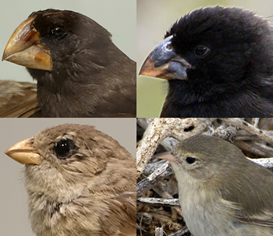
Darwin's illustration of the finches. Large beaks were adapated for cracking seeds. Smaller beaks were adapted for smaller seeds or insects.
Evolution by Natural Selection
Use VIDA to remember the process
V = variations exist in populations
I = Inheritance of traits
D = Differential survival and reproduction
A = Adapation, individuals with favorable traits survive and reproduce
Descent with Modification
Each generation will have more of the favorable traits than previous generation
A modern species can be traced to a common ancestor
Data Analysis
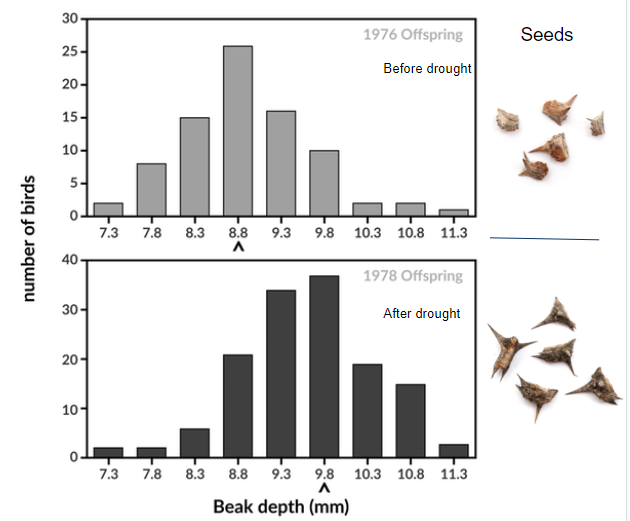
See Video: Galapagos Finch Evolution by HHMI
What do you see? * the average size of the beak increased after the drought
What does it mean? * the population changed
How could you explain the data? * finches with larger beaks surved and reproduced
Giraffe Evolution
- the ancestors of giraffes resble the okapi
- fossil record shows a change in the vertebrae shape (but not the number)
- individuals with longer necks survived and reproduced (natural selection)
Taxonomy - science of classifying organisms
Binomial nomenclature - a two name system, genus + species
Giraffes have several subspecies, found in different regions of Africa
Biogeography - the study of the distribution of species
Cladograms - show how the giraffes are related
Giraffes are descended from a common ancestor
The Definition of Evolution
Evolution is the change in allele frequencies, or a change in the gene pool, of a population.
*These changes may not be visible, they occur at the DNA level
Important Points
- Individuals do not evolve, POPULATIONS evolve
- Evolution does not have a direction
- Individuals differ in the relative FITNESS
Selection Strength
How does the environment push for the survival or elimination of a polymorphism?
Stickleback Fish
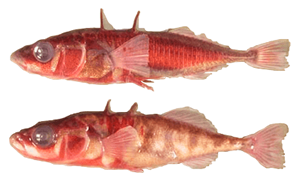
(Video: Meet the Three Spine Stickleback)
The armored plating on ocean fish is a disadvantage in freshwater.
The plates make it easy for aquatic invertebrates (dragonflies) to grab young fish.
In the ocean, the plates help the fish survive large predators.
Rock Pocket Mouse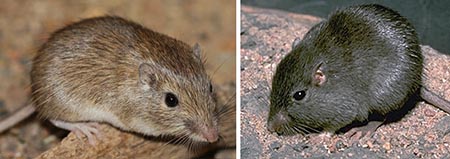
(Video: Natural Selection and the Rock Pocket Mouse )
Light colored mice are more likely to inhabit areas where there is light colored sand
Dark colored mice are more likely to inhabit areas where there are dark rocks.
Predatory birds hunt by sight, mice that don't blend in are easy targets.
Both mice have white bellies, because that doesn't impact their survival.
What about Giraffes? How did they get their long necks?
What selective pressure may account for the long necks (and legs) of giraffes?
Giraffes with long necks survived and passed their genes to offspring. Overtime, the population had individuals with long necks.
How does natural selection explain the many subspecies of giraffes?
The subspecies may be the result of differing selective pressure, but are most likely the result of genetic drift.
Divergent Evolution - many species arise from a common ancestor (finches)
Convergent Evolution - unrelated species share features that are adaptations for a particular environment (sharks and dolphins)
Phylogenetic Trees - show relationshiips
